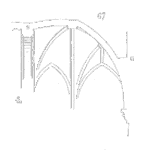
So I got to wondering today, is it just me or are there way too many pets on planes these days?
And, just so I can maybe avoid 1 or 2 hate replies I am a pet owner. I have always loved all of my pets, I have spoiled them on occasion and we treat them like family. I love coming home the unglued excitement of a wagging tail powerful enough to take anything not nailed down off the closest table but I have to wonder how much our pets really enjoy being dragged onto a flying tin can captured in close quarters for hours at a time only to have the doors opened to an environment where their owners speed walk to the nearest rest room but poor Jake still isn’t allowed to relieve himself? [Read more…]












 Ask a question or send along a comment.
Please login to view and use the contact form.
Ask a question or send along a comment.
Please login to view and use the contact form.